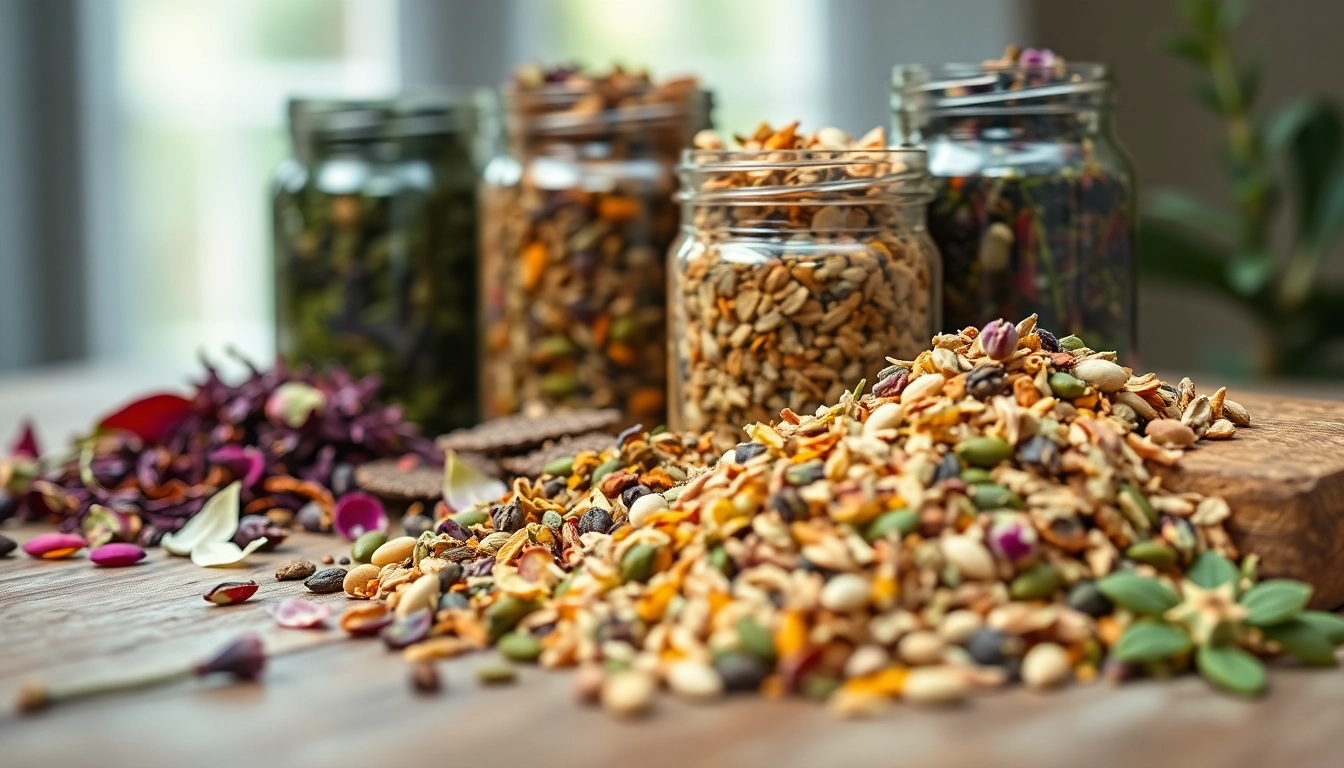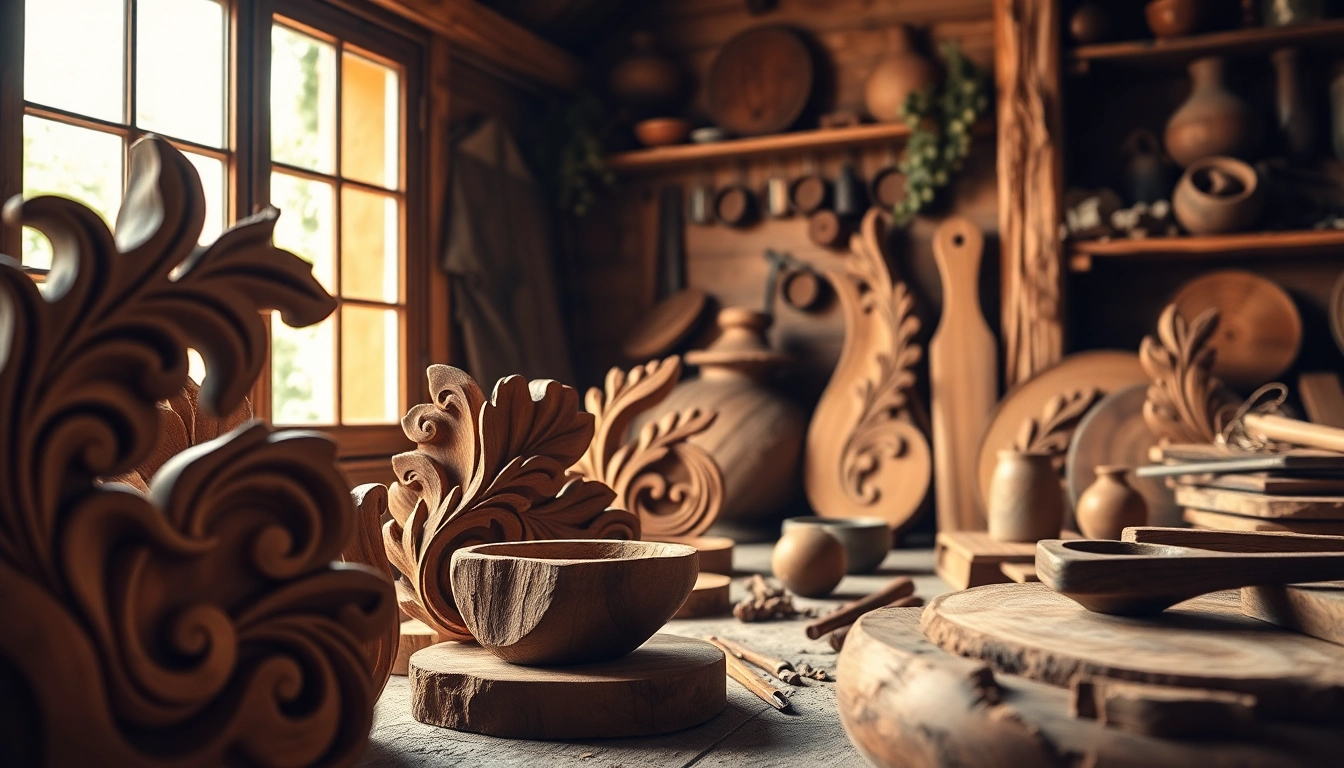Introduction to Herbal Blends
In the realm of natural wellness, few subjects are as compelling as the use of Herbal Blends. These mixtures, composed of various herbs, offer a unique approach to health that dates back centuries. With increasing interest in holistic treatments and organic living, herbal blends are surging in popularity as people seek alternatives to conventional medicine. This article delves into what herbal blends are, their benefits, tips for choosing quality blends, and much more, aimed at enhancing your understanding and incorporation of these natural remedies into your daily routine.
What are Herbal Blends?
Herbal blends are combinations of two or more herbs formulated to create synergistic effects for health benefits. These blends can be consumed as teas, tinctures, capsules, or powders, and are often tailored for specific health purposes or tastes. The art of blending herbs requires an understanding of each herb’s properties, flavors, and potential interactions. From soothing chamomile to invigorating ginseng, the world of herbal blends is as diverse as it is beneficial.
Benefits of Using Herbal Blends
Using herbal blends can yield a multitude of benefits:
- Holistic Health Support: Herbal blends can support overall wellness, addressing various conditions and promoting balance in the body.
- Natural Ingredients: Unlike synthetic supplements, herbal blends often consist of whole plants with minimal processing, making them appealing for those seeking natural options.
- Customization: Users can create or select blends tailored to their individual preferences and health goals, ensuring a personalized approach to wellness.
- Potential Synergy: Certain herbs may enhance or complement each other’s effects when blended, leading to more potent health benefits.
How to Choose Quality Herbal Blends
Choosing the right herbal blends is crucial for maximizing their benefits. Here are some tips:
- Source Matters: Look for reputable brands that use high-quality, organic ingredients free from pesticides and additives.
- Transparency: Quality brands should provide information about sourcing, processing methods, and detailed ingredient lists.
- Certifications: Look for certifications such as USDA Organic, Non-GMO Project Verified, or third-party lab testing for quality assurance.
- Read Reviews: Customer experiences can provide insights into the effectiveness and flavor profile of specific herbal blends.
Types of Herbal Blends
Common Herbal Blends and Their Uses
Herbal blends can be categorized based on their intended use. Here are some common types:
- Relaxation Blends: Typically include herbs like chamomile, lavender, and valerian, these blends are ideal for stress relief and promoting sleep.
- Detox Blends: Often feature ingredients like dandelion root and nettle, focused on eliminating toxins and supporting liver health.
- Immune Support Blends: Echinacea, elderberry, and astragalus are frequently combined to boost the immune system and fend off illness.
- Digestive Health Blends: These may include peppermint, ginger, and fennel, used to alleviate digestive discomfort and improve gut health.
Regional Herbal Blends You Should Try
Herbal blending practices vary widely across cultures. Exploring regional blends can introduce you to new tastes and benefits:
- Chinese Herbal Medicine: Formulations may include ginseng, goji berries, and licorice root, tailored to balance the body’s yin and yang energies.
- Ayurvedic Blends: Indian herbal mixtures often incorporate turmeric, holy basil, and ashwagandha, focusing on holistic health and balance.
- Western Herbalism: In the West, blends can include thyme, rosemary, and sage, emphasizing culinary uses alongside health benefits.
Herbal Blends for Specific Health Goals
When selecting herbal blends, consider your specific health goals. Here are a few examples:
- Stress Relief: Blends containing lemon balm, passionflower, or kava can help quiet the mind and ease anxiety.
- Weight Management: Ingredients like green tea and cayenne pepper may enhance metabolism and support weight loss.
- Energy Boost: Blends featuring yerba mate or matcha tea can provide a clean energy lift without the crash associated with caffeine.
How to Incorporate Herbal Blends into Your Routine
Easy Ways to Use Herbal Blends in Drinks
Integrating herbal blends into your daily beverage choices is simple and enjoyable:
- Herbal Teas: Brew herbal blends in hot water for a soothing drink, perfect for mornings or evenings.
- Smoothies: Add powdered herbal blends to your smoothies for nutritional boosts without altering flavor much.
- Infused Water: Steep herbs in water overnight for a refreshing drink that encourages hydration.
Cooking with Herbal Blends: Recipes to Explore
Herbal blends can also enhance your culinary creations. Here are some recipe ideas:
- Herbal Soup: Incorporate detox blends into vegetable soups for added flavor and health benefits. Try adding a detox blend featuring dandelion and nettle for an earthy taste.
- Herb-Infused Oil: Create your own herb-infused oil for cooking or drizzling over salads. Use blends with rosemary and thyme for a fragrant twist.
- Baking: Add herbal blends to bread or muffin recipes for unique flavors, such as lavender in lemon muffins.
Creating DIY Herbal Blends for Personal Use
Crafting your own herbal blends allows for customization tailored to your health needs:
Start by selecting a base herb, such as green tea for its antioxidant benefits or chamomile for relaxation. Then, add complementary herbs based on the desired effects—perhaps adding ginger for digestion or peppermint for a fresh flavor. Experiment with ratios and taste your blend to find the perfect balance and potency that suits your palate and needs.
Storing and Maintaining Herbal Blends
Best Practices for Storing Herbal Blends
Proper storage of herbal blends is essential for maintaining their potency and flavor:
- Airtight Containers: Use glass jars or containers with tight-sealing lids to prevent air exposure.
- Cool, Dark Places: Store your blends away from direct sunlight and heat to preserve their quality.
- Labeling: Always label your blends with the name, mixing date, and expiration to keep track of freshness.
Signs of Quality in Herbal Blends
When evaluating the quality of herbal blends, consider the following indicators:
- Color: Fresh herbs should be vibrant in color, while faded or dull appearances may indicate age or inferior quality.
- Aroma: High-quality herbs have a strong, pleasant aroma; if the scent is faint or off-putting, it may be stale.
- Taste: A small taste test can reveal the blend’s freshness; vibrant flavors signify a well-preserved quality.
How to Refresh Old Herbal Blends
If you have herbal blends that have been stored for a while, there are ways to refresh or reinvigorate them:
- Combine with Fresh Herbs: Mix old blends with new, fresh herbs to boost potency and flavor.
- Infusion: Steeping older herbs for longer in hot water can extract remaining beneficial compounds.
- Usage in Cooking: Use older herbs in cooking where heat can help reintroduce flavors, such as in soups or stews.
The Future of Herbal Blends in Wellness
Trends in Herbal Blends for 2024
As interest in herbal remedies continues to grow, several trends are emerging in 2024:
- Eco-Friendly Sourcing: Consumers are increasingly prioritizing brands that emphasize sustainability in sourcing herbs.
- Personalized Nutrition: Customized blends based on individual health assessments or DNA testing are becoming more common.
- Functional Beverages: The rise in popularity of tea and herbal-infused beverages continues to merge convenience with health benefits.
The Role of Herbal Blends in Natural Medicine
Herbal blends play a significant role in alternative medicine practices, often viewed as complementary to conventional treatments:
Many practitioners incorporate herbal blends into holistic treatment plans, recognizing the potential for synergy with pharmacological therapies. For example, patients with chronic conditions may utilize herbal mixtures to alleviate symptoms alongside their prescribed medications, fostering a more integrated approach to healthcare.
Research and Innovations in Herbal Blends
On the research front, scientists are increasingly studying the efficacy and safety of herbal blends, resulting in innovations such as:
- Clinical Studies: Ongoing clinical trials aim to quantify the effects of popular herbal blends on various health conditions.
- Extract Technology: Advances in extraction methods are allowing for more potent concentrations of herbal properties in blends.
- Product Development: New herbal blend products tailored for specific demographics, like athletes or seniors, are emerging on the market.



